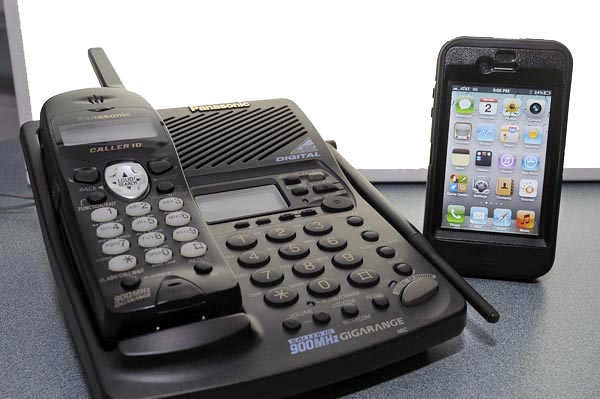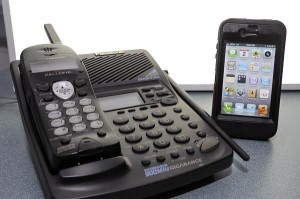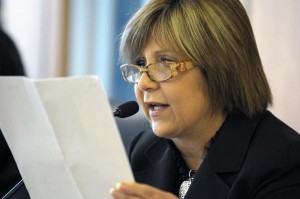SPECIAL REPORT: Nearly 125K low-income consumers lose phone subsidy benefits


Eligible low-income consumers can apply for a monthly subsidy for either regular or mobile telephone service, not both. (Credit: © Mauricio Pascual)
Close to 125,000 low-income consumers have been dropped from the list of beneficiaries receiving subsidies for their home or mobile telephone services through the Universal Service Fund after the Telecommunications Regulatory Board uncovered an alleged pattern of participants who were double- and triple-dipping into the pool of local and federal money, News is my Business learned.
The investigation that resulted in the mass de-enrollments during the first quarter of this year began in September 2010, sparked by an unusual spike in the number of low-income residents enrolled in the USF’s Lifeline subsidies program, agency President Sandra Torres confirmed Monday.
That month, the agency detected a jump from the normal 300,000 subscriber base to more than 494,000, which Torres said exceeded the “island’s population living below poverty level.”
The Lifeline benefit granted through the USF gives qualifying low-income residents a monthly $13.50 subsidy on the basic rent of either their residential landline phone or one mobile device. While $10 comes from the federal USF pool, the remaining $3.50 is paid from an account residing at the Government Development Bank that feeds from charges passed on to regular consumers on their monthly phone bills.
The subscriber is qualified through the phone company of their choice, which must make sure each potential subscriber meets the necessary legal requirements to enjoy the benefit. That is, be enrolled for any government assistance program and fill out all of the information needed upon applying — name, plus paternal and maternal last names, Social Security number, and full address, among other data.
“Initially, we thought the increase in subscriber levels had to do with the fact that we had approved a new company, TracFone, as eligible to offer Lifeline services in the local market,” Torres said. “However, when we decided to evaluate the situation, we noticed that there were people participating in the program three or four times, with different names and addresses. That was when we ordered an audit of the program.”
The agency’s action was met with resistance from several telecom providers who took the matter to court, stalling the investigation for more than a year, she said. Ultimately, the court decided in favor of the TRB, allowing it to move forward with its probe that uncovered more than 113,000 Social Security beneficiaries and more than 11,300 low-income subscribers misusing the benefit.
“We identified the company that was offering the service to the duplicate customers and asked them to fix the problem. That’s when they started to complain over the process,” she said, noting that in most duplicate cases, the customers were “induced into error by the provider.”
Initially, the TRB warned consumers identified as misusing the benefit that they would be banned from re-applying for it for a year, but the agency has since reverted its decision.
In an ad published in a local newspaper today, the TRB tells consumers if their service was suspended, they can immediately request reinstatement of one monthly subsidy through their telephone service provider.
Attempts to obtain reactions from the island’s wireless providers participating in the USF Lifeline program — AT&T de Puerto Rico, T-Mobile Puerto Rico, Sprint, and Puerto Rico Telephone/Claro — were unsuccessful Monday.
Millions on the line
The Lifeline subsidy controversy has not only affected consumers, but has also represented monetary losses for telephone service providers, as the agency is withholding some $10 million in subsidy payments, Torres confirmed.
“We will continue withholding payments as long as the companies refuse to participate in the process of certifying beneficiaries according to our Lifeline rules,” she said.
As part of the agency’s move to cut down on irregularities related to the Lifeline subsidy, effective May 1 it will deploy a mandatory computerized registry to keep track of beneficiaries and prevent duplication of benefits, she said.
The database will serve as a common repository for information that providers will supply on a monthly basis, which will give Puerto Rico an exact headcount of Lifeline beneficiaries. The companies will also be able to check whether a specific customer is already benefitting through another carrier, she said.
“We created a program and are imposing the obligation on companies that before gaining a subscriber, they must double-check their status in the system,” she said.
TracFone takes fight to FCC
One of the carriers that has taken its fight to Washington, D.C. is TracFone Wireless, a subsidiary of América Móvil, which owns Puerto Rico Telephone/Claro. The carrier — certified to offer Lifeline services in Puerto Rico in 2010 — claims the TRB’s order to drop those suspected of abusing the benefit is illegal and has turned to the FCC for relief.
 Among other things, the carrier claims that the TRB’s order caused it to lose more than 40,000 qualified low-income consumers from its Lifeline program effective Mar. 1.
Among other things, the carrier claims that the TRB’s order caused it to lose more than 40,000 qualified low-income consumers from its Lifeline program effective Mar. 1.
“The Board’s assertion that its authority to administer universal service programs in Puerto Rico solely based on state law is especially misplaced with respect to TracFone, which has never sought nor received a single dime of support from the Puerto Rico Universal Service Fund,” the carrier said in a recent filing before the FCC. “TracFone’s Lifeline program is funded entirely by the federal USF and by TracFone.”
But the agency was quick to file its rebuttal, saying “TracFone’s alleged concern about residents in Puerto Rico losing telecommunications service is a transparent attempt to preserve its own economic model.”
Furthermore, Torres said TracFone has not wanted to participate in the review of beneficiaries, saying its business model does not follow the rest of the industry’s.
“They don’t get any local funding, but they’re using Family Department lists to send an active phone to beneficiaries, who due to their business model, then have nowhere to call or go to return the handset,” she said. “They go on to collect the $10 federal subsidy.”
Numerous attempts to reach TracFone officials have been unsuccessful in recent weeks.
FCC also pursuing ‘waste, fraud’
The issue of duplicate Lifeline benefits is something the FCC has also been tackling on a national level, within a sweeping program reform launched last summer.
Among the changes to eliminate waste, fraud, and abuse, to save up to $2 billion over three years, the FCC has set a savings target of $200 million for 2012. It has also created a National Lifeline Accountability Database to prevent multiple carriers from receiving support for the same subscriber.
The database will build on FCC efforts in 2011 that eliminated nearly 270,000 duplicate subscriptions in 12 states following review of more than 3.6 million subscriber records, saving $33 million, the agency said.









